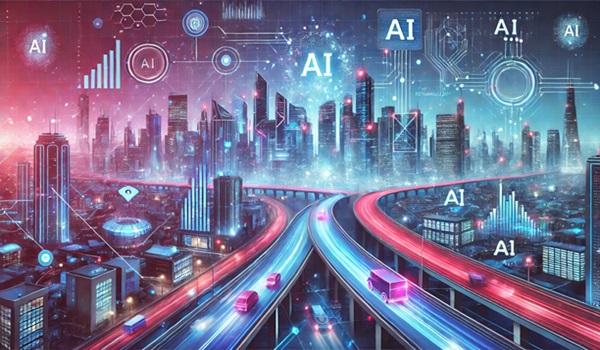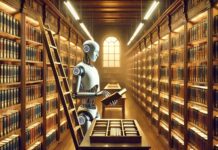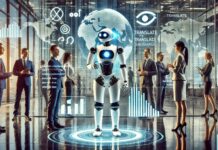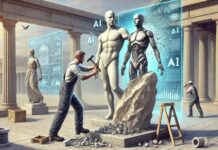Each week we find a new topic for our readers to learn about in our AI Education column.
Sometimes we get way out in the ether in AI Education and talk about seemingly alien topics that blow our minds. The artificial intelligence of things sounds like it could be one of those topics, but in reality, it is a synthesis of two concepts which, hopefully by now, we’re pretty familiar with: Artificial intelligence and the so-called internet of things (IoT).
I’ll dispense with a definition of AI this week, since it’s what we’ve been tasked with talking about week, after week, after week, but perhaps we need to revisit the internet of things. Before AI became such a dominant topic of technology conversation, there was a lot of talk about the IoT as a potentially world-changing concept (of course, there was also a lot of talk about the metaverse, and that hasn’t amounted to much in reality—yet).
The IoT started when we miniaturized computers and began placing them in everything, like our cars, kitchen appliances, washing machines, vacuum cleaners, pet dishes, phones, watches, glasses, listening devices, televisions and just about everything else you can imagine. As we computerized our world, someone thought it might be nice if these computers could connect and communicate with each other, and voila!, the IoT was born out of those connections.
How We Got Here
Well, this week it wasn’t a news story or pitch that took us to the AIoT, but our own curiosity. See, there was a time not long ago when perusing technology news and reading the pitches in my inbox when an internet of things story appeared not just on a daily basis, but several times a day. In thinking about what a total flop the so-called metaverse concept has been thus far, we started to wonder about some of the other technologies that were big in conversations before Covid kind of reset all of us.
We were also thinking from an AI perspective. It would seem that an internet of things, if it came to fruition, would be a powerful source of information on which to train AI models and agents, especially those designed to help with everyday household tasks, or to monitor health and suggest interventions. AI could even manage carefully connected and integrated households, offering consumers new, more sophisticated levels of automation.
As it turns out, while it hasn’t made as many headlines in recent years as it did during the period leading up to the pandemic, the internet of things is not only alive and well, but it has been steadily growing as more devices and connections come online, and is becoming more valuable as more data is collected over time. There are now tens of billions of IoT-linked devices.
Welcome to the AIoT
Conceptually, the AIoT works no differently than an individual AI agent, though the AIoT will actually describe a collection of AI models and agents working synchronously. Data is collected through the devices connected to the internet of things. Machine learning algorithms then analyze that data and identify patterns and correlations, weights and priorities. Based on the data analysis, the artificial intelligence returns insights, recommendations or decisions. Those decisions trigger actions. Then, AI checks its own work, and learns as it goes.
Until recently, the internet of things was being developed beside AI, instead of with it. AI can connect to the internet of things not just to harness all of the data being collected by our devices, but to automate significant portions of our home and work lives because it allows the human professionals and technology systems to collect and act on accurate real-time data. Today, the AIoT is being made a reality.
AIoT applications are already being used to schedule and perform predictive maintenance on industrial and business machines, analyze traffic patterns and optimize signal timing across different transportation networks, and to improve energy efficiency in vehicles and buildings.
The AIoT of the Future
Rather than submit to lengthy medical tests and monitoring in a controlled clinical setting, doctors can now record a patient’s vital signs remotely using wearable devices and in-home medical sensors, enabling more accurate telemedicine practices and effectively eliminating the need for some in-person appointments and tests. Continuous monitoring using personal devices can enable doctors to detect the early signs of health problems, leading to earlier interventions.
In healthcare, as in many other sectors, the AIoT enables a higher level of personalization than was available before. Treatments and other interventions can be tailored not just to a person’s body, but also to their lifestyle and preferences. Similarly, AIoT data can be used by product makers, distributors and retailers to target groups of customers and/or individuals.
The AIoT is essential to the future vision of smart cities. Today, the term “smart city” merely describes a town that makes data-driven decisions. In the future, the collection of smart city data and the execution of decisions will be automated via an AIoT—so an AIoT-linked vehicle might detect a pothole on a city street and report that pothole automatically via a message to the city’s department of public works, where an AI agent would record the complaint and send out an automated crew to patch the street.
AIoTs will feed into and help power autonomous vehicles and transportation systems, build and operate digital twins, run our ports and railroads, and, potentially, navigate cargo ships. And that’s only what we can envision today—when linked with financial services applications, like securities exchanges, a new universe of possibilities for the AIoT will likely emerge.







